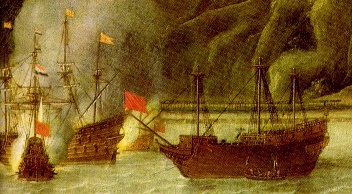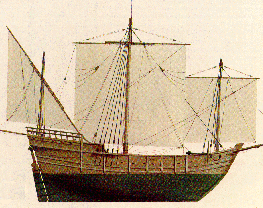

A new type cargo ship, the COG,
was developed in the later Middle Ages. Broad, with high sides, relatively
flat bottom, and with great stability, the cog increased the ability of
merchants to carry large amounts of cargo. In
this picture of a cog, notice that it is backed into the shore (flat
bottom) and notice its cargo. Remember that the artist has not painted
the ship to scale. This picture
is of the port of Naples in the fifteenth century. Notice the
number of cogs in comparison to other vessels. The other vessels
are galleys (History of the Galley) that
were the standard vessels for war and trade from the ancient world to the
Renaissance. Can you see what advantages a galley might have in comparison
to a cog? The successor to the cog was the
hulk, which was bigger, carried more cargo, and sailed more efficiently.
By the end of the fifteenth century,
the caravel, successor to the hulk, had become the largest ship of commerce.
The galleon was the successor of the caravel.
 |

|